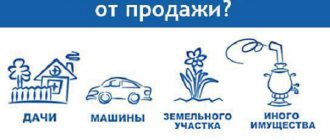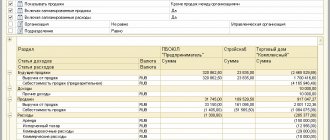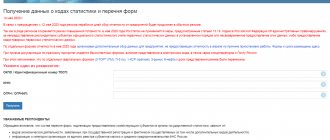What taxes an entrepreneur will have to pay under the simplified tax system depends on the type of tax and whether the company has employees.
The simplified taxation system, simplified taxation system or simplified tax system is a type of tax for small and medium-sized businesses. Individual entrepreneurs using the simplified tax system do not pay personal income tax, personal property tax and VAT. If an entrepreneur imports goods from abroad, VAT will have to be paid.
Companies that:
- less than 100 employees;
- income and balance less than 150 million rubles;
- other organizations participate no more than 25%;
- no branches.
The essence of the simplified tax system 2021
STS – simplified taxation system
. This is a special regime that allows you to significantly reduce the tax burden and reporting for entrepreneurs and LLCs compared to the OSNO tax (general taxation system).
There are two types of taxation under the simplified tax system:
- simplified tax system Income 6%;
- Simplified taxation system Income minus expenses 15%
Simplified taxation system Income 6% in 2021
USN Income 6%
— implies payment of a tax in the amount of 6% of the total turnover of the types of activities to which this special regime applies.
This tax regime is best suited for the service sector and retail trade, where there is a high margin (that is, simply mark-up on goods).
This taxation should be used if your clients are not only individuals, but also legal entities, as well as budgetary organizations.
Example: You provided some service worth 100,000 rubles, in this case the tax amount will be 100,000 * 6% = 6,000 rubles.
At the same time, the number of expenses that you incurred (with services they are minimal) is of no interest to anyone at all.
Simplified tax system 15% in 2021
Income minus expenses 15%
— implies payment of a tax in the amount of 15% of the organization’s net profit.
Most often, the simplified tax system of 15% is used for wholesale sales, or with a minimum margin (small markup on the product).
To put it simply: when your business has a lot of expenses, it will be more profitable to use the simplified tax system of 15%.
Example: You provided a service worth 100,000 rubles, and you incurred expenses of 75,000 rubles.
In this case, the tax amount will be: (RUB 100,000 – RUB 75,000)*15% = RUB 3,750.
IMPORTANT! The simplified taxation system replaces the OSNO tax. It is also prohibited to apply simultaneously the simplified tax system Income 6% and the simplified tax system Income minus expenses 15%; according to the law, you can only apply one of these tax regimes.
But it is not prohibited to change them in accordance with the law. As a rule, in 95% of cases since the beginning of the New Year
Simplified tax system 0% in 2021
At the moment, there are so-called tax holidays, in which the tax rate of the simplified tax system = 0.
In relation to the simplified tax system, tax holidays are applicable, with several restrictions:
- They are available only for newly opened IPs;
- Activities must be social, scientific or industrial.
What types of activities fall under tax holidays, that is, simplified tax system = 0, are decided by regional authorities.
You can see a list of these types of activities on the website of the city administration where your individual entrepreneur is open.
Look through everything carefully and you will find this regulation.
The concept of the simplified tax system for entrepreneurship
The simplified tax system is a type of tax burden, the main objectives of which are to ease the tax burden and simplify financial accounting for medium/small businesses.
“Simplified” is chosen by the majority of individual entrepreneurs, as there are a number of advantages that make it possible to quickly establish business activities by reducing costs. According to paragraph 3 of Art. 346.11 of the Tax Code of the Russian Federation (Part 2) dated August 5, 2000 No. 117-FZ (as amended on December 28, 2016) Individual entrepreneurs are exempt from the following payments:
- Personal income tax from doing business, except for income provided for by the Tax Code;
- property tax with the exception of the list of objects established by the Tax Code;
- VAT refund, except in cases prescribed by the Tax Code.
REFERENCE. Article 346.12 of the Tax Code of the Russian Federation provides a list of taxpayers who have the right to conduct activities under the simplified taxation system.
How to apply for the simplified tax system in 2021
- Existing companies and entrepreneurs can adopt a simplified taxation system from 01/01/2018; to do this, they must submit an application to the Federal Tax Service (tax service) in advance by 12/31/2017;
- New organizations and individual entrepreneurs can apply to the simplified tax system within 30 days from the date of registration (as a rule, those who decide to use the simplified tax system submit a notification along with registration documents and immediately get to the simplified tax system);
- Loss of the right to apply PSN or UTII special regimes. If for some reason you have lost the right to use these special regimes, then you can also switch to the simplified tax system without waiting for the year to end.
Attention reporting
- The individual entrepreneur reports to the simplified tax system in 2021 electronically to both the Pension Fund and the Social Insurance Fund, if his staff includes more than 25 employees. This is also a new norm introduced on January 1 of this year.
- Individual entrepreneurs do not report to the simplified tax system “for themselves” on insurance contributions to non-state funds. In total, two reports are relevant for him: in the PFS - form RSV-1, in the FSS - form 4-FSS.
We tried to reflect the most important points for individual entrepreneurs in a simplified form - what taxes he must pay this year, how and at what rate. If the legislator makes any adjustments to the regulatory framework, this information will be supplemented and updated.
Who cannot use the simplified tax system in 2021
- Entrepreneurs and LLCs whose income for 9 months will exceed 90,000,000 rubles will not be able to switch to the simplified tax system in 2021. – the limit in the period will be 120,000,000 rubles (there is nothing for beginners to worry about);
- The cost of fixed assets will exceed RUB 150,000,000. (newcomers rest);
- The number of employees exceeds 100 people (for the tax period, newcomers);
If a happy moment has come and you have stepped over the specified restrictions, then before the 15th day of the quarter following the one in which the organization or individual entrepreneur lost the right to apply the simplified tax system, you must notify the tax office.
Activities where the use of the simplified tax system is prohibited
- Foreign companies;
- Microfinance organizations;
- Government agencies;
- Organizations and individual entrepreneurs who switched from the Unified Agricultural Tax;
- Lawyers;
- Notaries;
- Organizations in which the share of other organizations is more than 25%;
- Gambling activities;
- Production of excisable goods;
- Extraction and sale of minerals;
- Securities market participants;
- Pawnshops;
- Banks;
- Insurers;
- Organizations that have branches;
- Investment funds;
- Non-state pension funds.
Personal income tax instead of income tax: reporting and payment
So, using OSNO, instead of income tax, an individual entrepreneur pays personal income tax, which is charged on income from his business activities.
An individual entrepreneur who is just starting to work on the general system, and who has received his first income of the year using this mode, is obliged to calculate the amount that he expects to receive by the end of the year and submit a 4-NDFL declaration about possible income to the Federal Tax Service. Based on it, tax authorities calculate the amount of advance payments for personal income tax and send notifications to individual entrepreneurs indicating the payment deadlines. There is no need for the individual entrepreneur to calculate advance amounts.
At the end of the calendar year, the individual entrepreneur submits a declaration to the inspectorate in form 3-NDFL and pays the tax minus the listed advances or declares a refund of the overpaid personal income tax. In the future, tax authorities will calculate the amount of advances based on the indicators of the 3-NDFL declaration for the previous tax period and there is no need to submit the 4-NDFL form.
The 4-NDFL declaration is submitted within 5 days after one month after receiving the first income on OSNO.
The deadlines for paying advances on personal income tax for individual entrepreneurs are as follows (clause 9 of article 227 of the Tax Code of the Russian Federation):
- June 15 of the current year – for January-June (50% of the total amount of advances),
- October 15 – for July-September (25% of the amount of all advances),
- January 15 of the next year - for October-December (25% of the amount of all advances).
No later than April 30 of the following year, a 3-NDFL declaration is submitted to the Federal Tax Service.
If the income for the year turned out to be higher than the individual entrepreneur expected, he will have to calculate and pay additional personal income tax to the budget by July 15 of the next year.
Tax return for simplified tax system in 2021
Submitting tax reporting to the simplified tax system consists of preparing and submitting a tax return to the simplified tax system. For individual entrepreneurs until April 30, 2021 and for LLCs until March 31, 2021.
In addition to the tax return for taxation under the simplified tax system, it is necessary to maintain a book of income and expenses (KUDiR).
The book is kept on a cash basis and do not forget that the simplified taxation system can be reduced by insurance premiums.
How to reduce the simplified tax system
The state allows us (businessmen) to reduce taxation of the simplified tax system on insurance premiums for individual entrepreneurs and employees.
Reducing the simplified tax system Income 6%
The 6% simplified tax system can be reduced by insurance premiums for employees and entrepreneurs.
It is the amount of tax payable that is reduced:
- Reduction if the activity is carried out by the entrepreneur himself. In this case, there are no restrictions for reduction and an individual entrepreneur can reduce the tax amount by 100%;
- Reduction of the simplified tax system (USN) of 6% on insurance premiums of employees when an individual entrepreneur is engaged in other activities. You can reduce the insurance premiums of employees, but no more than 50% of the amount of the tax itself (in our case, when calculating the 6% simplified tax system tax, it turned out to be 6,000 rubles, it can be reduced by no more than 50%, that is, by 3,000 rubles);
- Reduction of the simplified tax system (USN) 6% when individual entrepreneurs and employees are engaged in the same activity, in this case, insurance premiums of individual entrepreneurs + insurance contributions of employees (assuming 17200). In our case, nothing changes and the tax amount is also reduced by 50%, that is, by 3,000 rubles.
Reducing the simplified tax system Income minus expenses 15%
In this case, the tax itself cannot be reduced, but the tax base itself is reduced.
But you can reduce the tax base by 100% of expenses on insurance premiums.
If we take our example with expenses, we get (100,000 - 75,000 - insurance premiums) * 15%
Let us assume that the amount of insurance premiums for employees and individual entrepreneurs is the same as in the case of the simplified tax system. Income is 17,200 rubles.
In this case, simplified tax system = (100,000 – 75,000 – 17,200)*15% = 1,170 rubles.
As you can see, with high expenses, it is more profitable to use the simplified tax system: Income minus expenses of 15%.
It is worth noting that for the simplified tax system Income minus expenses of 15% there is a so-called minimum tax of 1% of the organization’s total turnover, and it makes no difference that nothing is earned or even a loss (1% must be paid in any case).
Individual entrepreneur insurance premiums 2021
Individual entrepreneur contributions to compulsory pension insurance
Individual entrepreneurs' insurance premiums for mandatory insurance in 2021 are a fixed amount established by the Tax Code of the Russian Federation - 32,448 rubles for the full year. This formula applies when calculating contributions if the individual entrepreneur’s income for 2021 did not exceed 300 thousand rubles. If the income received is greater, then the amount of insurance premiums increases by another 1% of income received above this limit. There is also an upper limit for pension insurance contributions - no more than 259,584 rubles.
Individual entrepreneurs' contributions to compulsory health insurance
Individual entrepreneurs' insurance premiums for compulsory medical insurance for 2021 are set at 8,426 rubles. Please note that compulsory health insurance contributions do not increase with income growth and remain the same amount.
In total, individual entrepreneurs’ contributions in 2021 for themselves with an annual income not exceeding 300 thousand rubles (including in the absence of activity or profit from it) will amount to 40,874 rubles.
Individual entrepreneur contributions for their employees
If an entrepreneur uses hired labor, then in addition to insurance premiums for himself, he must pay insurance premiums for his employees.
In general, insurance premiums for employees consist of:
- payments for compulsory pension insurance – 22%;
- payments for compulsory social insurance – 2.9%;
- payments for compulsory health insurance – 5.1%.
Additionally, a contribution is paid to the Social Insurance Fund for compulsory insurance against accidents at work and occupational diseases (from 0.2% to 8.5%).
Please note: from April 2021, as a measure to support business during the global economic crisis, insurance premium rates for payments to employees above the minimum wage have been halved.
Benefits for paying insurance premiums
Since 2013, so-called grace periods for non-payment of insurance premiums have been in effect, when the entrepreneur does not conduct business, because... is serving on conscription, is on leave to care for a child under one and a half years old, a disabled person, a person over 80 years old, or is the spouse of a contract soldier or diplomatic worker and does not have employment opportunities. To receive this benefit, you must contact your tax office with an application.
In all other cases - additional work for hire or a civil contract, reaching retirement age, lack of activity or profit from it - the entrepreneur must transfer insurance premiums for himself. The tax inspectorate will stop accruing them only after the individual entrepreneur’s data is removed from the state register.
For entrepreneurs registered not from the beginning of the year, insurance premiums are calculated not in full amount, but taking into account the days that have passed from the date of registration of the individual entrepreneur.
We recommend: Registration of individual entrepreneurs online
Insurance premium calculator
It is necessary to pay insurance premiums in the amount of: - r.
The payment consists of:
| Purpose of payment | Sum | Payment date |
| Fixed contributions for compulsory pension insurance | - R. | Pay by December 31, 2021 |
| Additional contributions for compulsory pension insurance | - R. | Pay by July 1, 2021 |
| Fixed contributions for compulsory health insurance | - R. | Pay by December 31, 2021 |







